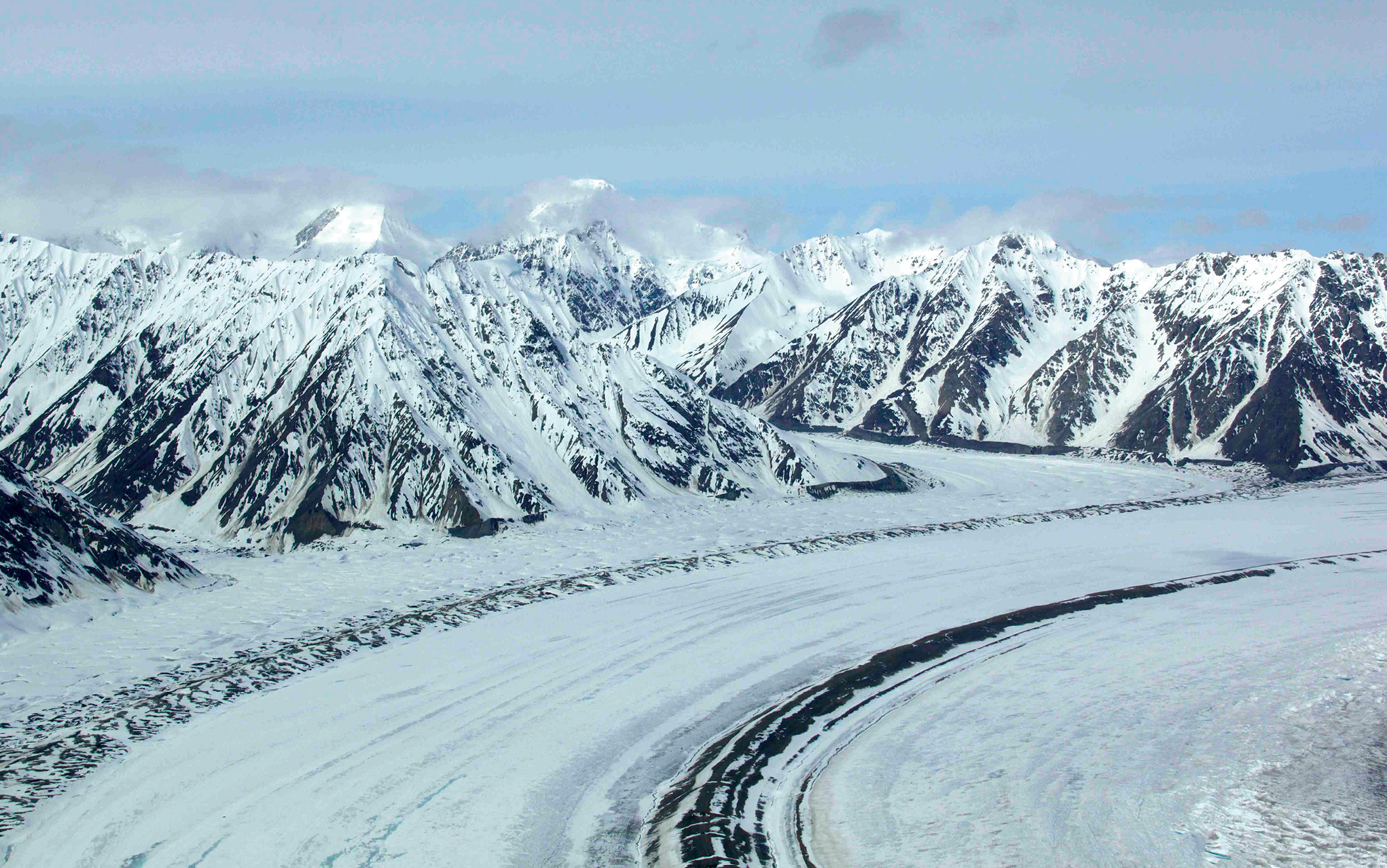Man on Glacier
Reveries of a solitary roamer
Matthew Spellberg

Solitude. Where does its value lie? For in solitude we are in the presence of mere matter (even the sky, the stars, the moon, trees in blossom), things of less value (perhaps) than a human spirit. Its value lies in the greater possibility of attention. If we could be attentive to the same degree in the presence of a human being…
— Simone Weil
He has made a life of traveling to places remote and distant, but since retiring—when I first met him in 2012, he was seventy-two—the glaciologist G. has been truly away, working by himself on the subpolar ice fields of the Yukon and southern Alaska. He is one of the few people to go alone into the Saint Elias wilderness, the largest unbroken mass of ice outside the polar circles, and he is flown in by ski-plane, sometimes for weeks at a time. He is thin, almost wiry, with outsize hands, and his skin is ruddy and worn. I once saw him get into a bush plane wearing a rather ridiculous pair of puffy, purple, down coveralls, and wondered how long he could possibly survive on the icy expanse. But he emerged from the same plane a few weeks later, and the following summer he lived by himself in a tent on a finger of the Malaspina Glacier, which runs for miles up and down the Alaska Panhandle. He mentioned casually that he had endured, by himself, two considerable earthquakes and the attentions of a lonely grizzly.
I had wanted to talk with him about dreams and visions when we first met at a research base in the southwestern Yukon, but he brushed away my questions, explaining that such things were unimportant to him, especially given that he was just then investigating a piece of wood he had found, miles into the ice field, near an automated weather station he had flown in to repair. In the Saint Elias, there are no trees or shrubs; there isn’t even lichen on the ice. What was the wood doing there, he wanted to know. Many possibilities were entertained: that there had once been a prehistoric forest over the ice field (doubtful, and certainly not in eons), or that the ice field had once advanced across a boreal forest, cut off a tree branch, and carried it here (a hypothesis almost certainly ruled out by the known movements of the ice sheets in the region). It was much more likely—though still, all things considered, quite astonishing—that some person had once left it there. If the piece of wood had arrived there by human means, then it might have been left by an early mountaineering expedition, such as that of the Duke of the Abruzzi, who climbed Mount Saint Elias in 1897 with a team of Italian adventurers, bringing with him, among many other things, a collapsible iron bed on which to sleep. (I doubted this fantastical accretion of details until later, in the Columbia University archives, I discovered full newspaper reports of the expedition, which mentioned the duke’s bed, and also the curious fact that several members of that expedition claimed to have seen a phantom city with gilded towers suspended over the glaciers of Icy Bay.) But by most accounts the duke and his equipage didn’t cross this particular pass, so a more likely explanation was that the wood had been left by a 1925 expedition undertaken by the United States and Canada, whose members used willow wands to hold their ropes in place. But willow wands for climbing must be straight and sturdy, and this lonesome object was gnarly, brittle, and tangled. If such a branch had truly been deposited by a human passing that way, it could only have been intended as firewood, and firewood would mean no modern expedition.